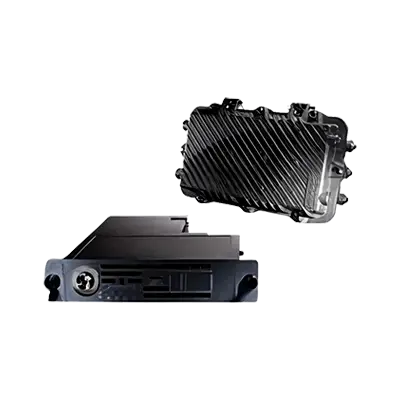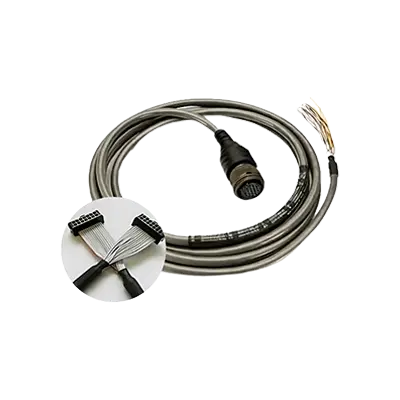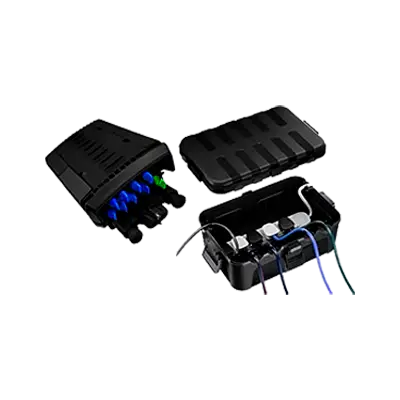Call +(254) 703 030 000 / 751 483 999 / 721 704 777
- Home
- Information Communication Network
- It Networks
.....Read More
Frequently Asked Questions
What is an IT network?
An IT network, or information technology network, is a collection of interconnected devices and systems that communicate and share resources. These devices can include computers, servers, routers, switches, and other hardware, as well as software applications and protocols that facilitate communication. The primary purpose of an IT network is to enable data exchange and resource sharing among users and devices, enhancing efficiency and collaboration within an organization or between multiple entities.
IT networks can be classified into different types based on their size and scope. Local Area Networks (LANs) connect devices within a limited geographic area, such as a single building or campus. Wide Area Networks (WANs) cover larger geographic areas, often connecting multiple LANs across cities, countries, or even continents. Metropolitan Area Networks (MANs) serve a city or a large campus, bridging the gap between LANs and WANs.
Networks can also be categorized by their architecture. Client-server networks have centralized servers providing resources and services to client devices. Peer-to-peer networks allow devices to share resources directly without a central server. Network topologies, such as star, ring, bus, and mesh, describe the physical or logical arrangement of network devices and connections.
Protocols are essential for network communication, with the Internet Protocol (IP) being the most widely used. Other protocols, like Transmission Control Protocol (TCP), Hypertext Transfer Protocol (HTTP), and Simple Mail Transfer Protocol (SMTP), facilitate specific types of data exchange.
Security is a critical aspect of IT networks, involving measures like firewalls, encryption, and access controls to protect data integrity and privacy. Network management involves monitoring, maintaining, and optimizing network performance to ensure reliability and efficiency.
In summary, an IT network is a complex system enabling communication and resource sharing, vital for modern business operations and connectivity.
How do IT networks work?
IT networks work by connecting multiple devices to share resources and information efficiently. At the core, networks consist of hardware components like routers, switches, and cables, and software protocols that manage data transmission.
1. **Components**:
- **Devices**: Computers, servers, printers, and other peripherals.
- **Routers**: Direct data packets between networks, determining the best path.
- **Switches**: Connect devices within a single network, forwarding data to the correct destination.
- **Cables/Wireless**: Physical or wireless media that carry data signals.
2. **Types of Networks**:
- **LAN (Local Area Network)**: Covers a small geographic area, like an office.
- **WAN (Wide Area Network)**: Spans large distances, connecting multiple LANs.
- **MAN (Metropolitan Area Network)**: Covers a city or campus.
3. **Protocols**:
- **TCP/IP (Transmission Control Protocol/Internet Protocol)**: Fundamental suite for internet and network communication.
- **HTTP/HTTPS**: Protocols for web data transfer.
- **FTP (File Transfer Protocol)**: Used for transferring files.
- **SMTP (Simple Mail Transfer Protocol)**: For sending emails.
4. **Data Transmission**:
- Data is broken into packets, each with a header containing destination and source information.
- Packets travel through the network, guided by routers and switches.
- Protocols ensure packets are reassembled correctly at the destination.
5. **Security**:
- Firewalls, encryption, and VPNs (Virtual Private Networks) protect data integrity and privacy.
6. **Network Management**:
- Monitoring tools and software ensure network performance and troubleshoot issues.
By integrating these components and protocols, IT networks enable seamless communication and resource sharing across various devices and locations.
What are the different types of IT networks?
1. **Local Area Network (LAN):** Connects computers within a limited area like a home, school, or office building. It enables resource sharing such as files, printers, and internet connections.
2. **Wide Area Network (WAN):** Spans a large geographic area, often a country or continent. The internet is the largest WAN, connecting multiple LANs.
3. **Metropolitan Area Network (MAN):** Covers a city or a large campus. It is larger than a LAN but smaller than a WAN, often used to connect multiple LANs within a city.
4. **Personal Area Network (PAN):** A network for personal devices, typically within a range of a few meters. Bluetooth and USB connections are common examples.
5. **Campus Area Network (CAN):** Connects multiple LANs within a limited geographic area, such as a university campus or a business park.
6. **Virtual Private Network (VPN):** Extends a private network across a public network, enabling users to send and receive data as if their devices were directly connected to the private network.
7. **Storage Area Network (SAN):** Provides access to consolidated, block-level data storage, primarily used to enhance storage devices like disk arrays and tape libraries.
8. **Enterprise Private Network (EPN):** Built and owned by businesses to securely connect various locations to share computer resources.
9. **Wireless Local Area Network (WLAN):** Similar to a LAN but uses wireless technology like Wi-Fi to connect devices.
10. **Global Area Network (GAN):** Supports mobile communication across an arbitrary number of wireless LANs, satellite coverage areas, etc.
11. **System Area Network (SAN):** Connects high-performance computers with high-speed connections in a cluster configuration.
12. **Home Area Network (HAN):** Connects devices within a home environment, often including smart home devices and appliances.
What is the difference between LAN, WAN, and MAN?
LAN (Local Area Network), WAN (Wide Area Network), and MAN (Metropolitan Area Network) are types of networks that differ primarily in their geographic scope and purpose.
LAN is a network that covers a small geographic area, like a single building or a campus. It is used to connect computers and devices within close proximity, allowing for resource sharing, such as files and printers. LANs typically offer high data transfer rates and low latency. They are often managed by a single organization and use technologies like Ethernet and Wi-Fi.
WAN spans a large geographic area, potentially worldwide. It connects multiple LANs and MANs, enabling communication between distant locations. WANs are used by businesses and governments to connect offices in different cities or countries. They rely on leased telecommunication lines, satellites, or the internet. WANs generally have lower data transfer rates and higher latency compared to LANs due to the vast distances covered.
MAN covers a larger area than a LAN but is smaller than a WAN, typically a city or a large campus. It is designed to connect multiple LANs within a metropolitan area, facilitating high-speed data transfer and communication. MANs are often used by cities or large organizations to connect various branches or departments. Technologies like fiber optics and wireless connections are commonly used in MANs.
In summary, LAN is for small, localized areas, MAN covers a city or large campus, and WAN connects broad, geographically dispersed areas. Each serves different needs based on the scale and scope of the network required.
How do I set up a home network?
1. **Gather Equipment**: Obtain a modem from your ISP, a wireless router, Ethernet cables, and devices to connect (e.g., computers, smartphones).
2. **Connect Modem**: Plug the modem into a power source and connect it to the internet service line (DSL, cable, or fiber).
3. **Connect Router**: Use an Ethernet cable to connect the modem to the router's WAN/Internet port. Power on the router.
4. **Access Router Settings**: Connect a computer to the router via Ethernet or Wi-Fi. Open a web browser and enter the router's IP address (commonly 192.168.1.1 or 192.168.0.1) to access the admin interface.
5. **Configure Router**: Log in using default credentials (often found on the router or manual). Change the default admin password for security.
6. **Set Up Wi-Fi**: Navigate to wireless settings. Create a unique SSID (network name) and a strong password using WPA3 or WPA2 encryption.
7. **Configure Network Settings**: Set up DHCP to automatically assign IP addresses to devices. Optionally, configure port forwarding or static IPs for specific devices.
8. **Connect Devices**: Use the SSID and password to connect devices to the Wi-Fi network. For wired connections, use Ethernet cables.
9. **Test Connectivity**: Ensure all devices can access the internet. Troubleshoot any connectivity issues by checking cables, restarting devices, or adjusting router settings.
10. **Secure Network**: Enable firewall settings on the router. Consider setting up a guest network for visitors to keep your main network secure.
11. **Regular Maintenance**: Update router firmware regularly for security and performance improvements. Reboot the router occasionally to maintain optimal performance.
What is network security and why is it important?
Network security refers to the policies, practices, and technologies used to protect the integrity, confidentiality, and accessibility of computer networks and data. It involves a range of measures designed to safeguard networks from unauthorized access, misuse, malfunction, modification, destruction, or improper disclosure. Key components include firewalls, intrusion detection systems, encryption, access controls, and antivirus software.
Network security is crucial for several reasons:
1. **Data Protection**: It ensures sensitive information, such as personal data, financial records, and intellectual property, is protected from breaches and theft.
2. **Business Continuity**: By preventing cyberattacks and minimizing downtime, network security helps maintain uninterrupted business operations.
3. **Compliance**: Many industries are subject to regulations that require stringent data protection measures. Network security helps organizations comply with laws like GDPR, HIPAA, and PCI-DSS.
4. **Reputation Management**: Security breaches can damage an organization's reputation. Effective network security helps maintain customer trust and brand integrity.
5. **Threat Mitigation**: It protects against a variety of threats, including malware, ransomware, phishing attacks, and denial-of-service attacks, which can disrupt operations and cause financial loss.
6. **Resource Management**: By preventing unauthorized access and misuse, network security ensures that network resources are used efficiently and appropriately.
7. **Innovation and Growth**: Secure networks provide a foundation for adopting new technologies and innovations, enabling businesses to grow and adapt in a competitive environment.
In summary, network security is essential for protecting data, ensuring business continuity, complying with regulations, maintaining reputation, mitigating threats, managing resources, and supporting innovation.
How can I improve my network's performance?
1. **Upgrade Hardware**: Invest in high-performance routers, switches, and network interface cards to handle increased data loads efficiently.
2. **Optimize Network Configuration**: Adjust settings for optimal performance, such as channel selection, bandwidth allocation, and Quality of Service (QoS) settings to prioritize critical traffic.
3. **Implement Network Segmentation**: Divide the network into smaller, manageable segments to reduce congestion and improve security.
4. **Use Wired Connections**: Where possible, use Ethernet connections instead of Wi-Fi to reduce latency and increase reliability.
5. **Regularly Update Firmware and Software**: Keep all network devices and software up to date to benefit from performance improvements and security patches.
6. **Monitor Network Traffic**: Use network monitoring tools to identify bottlenecks, unauthorized access, and unusual traffic patterns.
7. **Employ Load Balancing**: Distribute network traffic evenly across servers to prevent overload and ensure efficient resource use.
8. **Implement Caching**: Use caching mechanisms to store frequently accessed data locally, reducing load times and bandwidth usage.
9. **Enhance Security**: Use firewalls, VPNs, and encryption to protect data and prevent unauthorized access, which can degrade performance.
10. **Reduce Interference**: Minimize interference from other electronic devices by positioning routers away from potential sources of disruption.
11. **Optimize Wireless Settings**: Use the latest Wi-Fi standards (e.g., Wi-Fi 6) and ensure optimal placement of access points for maximum coverage and performance.
12. **Conduct Regular Audits**: Periodically review network performance and make necessary adjustments to configurations and policies.
13. **Educate Users**: Train users on best practices for network use to prevent unnecessary strain and ensure efficient operation.
14. **Consider Cloud Solutions**: Offload some network functions to cloud services to reduce local network load and improve scalability.
What are common network protocols?
Common network protocols include:
1. **HTTP/HTTPS (Hypertext Transfer Protocol/Secure):** Used for transferring web pages on the internet. HTTPS is the secure version, encrypting data for safe transmission.
2. **FTP (File Transfer Protocol):** Facilitates the transfer of files between computers on a network. It supports uploading and downloading files.
3. **SMTP (Simple Mail Transfer Protocol):** Used for sending emails across networks. It works with other protocols like IMAP or POP3 for email retrieval.
4. **IMAP/POP3 (Internet Message Access Protocol/Post Office Protocol):** Used by email clients to retrieve messages from a mail server. IMAP allows multiple devices to access the same mailbox, while POP3 downloads emails to a single device.
5. **TCP/IP (Transmission Control Protocol/Internet Protocol):** The foundational protocol suite for the internet, enabling reliable communication between devices. TCP ensures data integrity, while IP handles addressing and routing.
6. **UDP (User Datagram Protocol):** A connectionless protocol used for time-sensitive transmissions like video streaming or online gaming, where speed is prioritized over reliability.
7. **DNS (Domain Name System):** Translates human-readable domain names into IP addresses, allowing users to access websites using easy-to-remember names.
8. **DHCP (Dynamic Host Configuration Protocol):** Automatically assigns IP addresses to devices on a network, simplifying network management.
9. **SNMP (Simple Network Management Protocol):** Used for managing and monitoring network devices, providing information about network performance and usage.
10. **SSH (Secure Shell):** Provides a secure channel for remote administration and file transfers over an unsecured network.
11. **Telnet:** An older protocol for remote command-line interface access, largely replaced by SSH due to security concerns.
12. **ICMP (Internet Control Message Protocol):** Used for error messages and operational information, commonly utilized by tools like ping and traceroute.
How do I troubleshoot network connectivity issues?
1. **Check Physical Connections**: Ensure all cables are securely connected. Verify that the router and modem are powered on.
2. **Restart Devices**: Reboot your computer, router, and modem to refresh the network connection.
3. **Check Network Settings**: Ensure your device is connected to the correct network. Verify IP settings (DHCP or static) and DNS configurations.
4. **Ping Test**: Use the command prompt to ping a reliable website (e.g., `ping google.com`) to check connectivity. If it fails, try pinging the router (usually `192.168.1.1` or `192.168.0.1`).
5. **Check for Outages**: Contact your Internet Service Provider (ISP) or check their website for any reported outages in your area.
6. **Disable Firewall/Antivirus**: Temporarily disable firewall or antivirus software to see if they are blocking the connection.
7. **Update Network Drivers**: Ensure your network adapter drivers are up to date. Visit the manufacturer’s website for the latest versions.
8. **Check for Interference**: For Wi-Fi, ensure there are no physical obstructions or electronic devices causing interference. Consider changing the Wi-Fi channel.
9. **Test with Another Device**: Connect a different device to the network to determine if the issue is with the original device or the network itself.
10. **Reset Network Equipment**: Perform a factory reset on your router or modem if other steps fail. Reconfigure settings as needed.
11. **Check Router Logs**: Access the router’s admin panel to review logs for any error messages or unusual activity.
12. **Consult ISP Support**: If the problem persists, contact your ISP for further assistance and potential line tests.
What is the role of a router in a network?
A router is a critical device in a network that manages data traffic between different network segments, ensuring efficient communication and connectivity. Its primary role is to forward data packets between computer networks, directing them from their source to their destination. Routers operate at the network layer (Layer 3) of the OSI model, using IP addresses to determine the best path for data transmission.
Key functions of a router include:
1. **Packet Forwarding**: Routers analyze incoming data packets, determine their destination IP addresses, and forward them to the appropriate next hop on the network. This process involves examining routing tables to decide the optimal path for data delivery.
2. **Routing**: Routers maintain and update routing tables, which contain information about network topology and the best paths to reach different network destinations. They use routing protocols like OSPF, BGP, and RIP to exchange information with other routers and dynamically adjust routes based on network conditions.
3. **Network Segmentation**: By connecting multiple networks, routers segment traffic, reducing congestion and improving performance. They enable communication between different network segments, such as local area networks (LANs) and wide area networks (WANs).
4. **Traffic Management**: Routers prioritize data traffic based on policies, ensuring critical data receives precedence over less important traffic. This is crucial for maintaining quality of service (QoS) in networks with diverse data types, such as voice, video, and data.
5. **Security**: Routers enhance network security by implementing access control lists (ACLs) to filter traffic, blocking unauthorized access, and preventing potential threats. They can also support virtual private networks (VPNs) for secure remote access.
6. **Network Address Translation (NAT)**: Routers perform NAT to allow multiple devices on a private network to share a single public IP address, conserving IP addresses and enhancing security by masking internal IP addresses.
Overall, routers are essential for efficient, secure, and reliable network communication, enabling seamless data exchange across diverse network environments.





